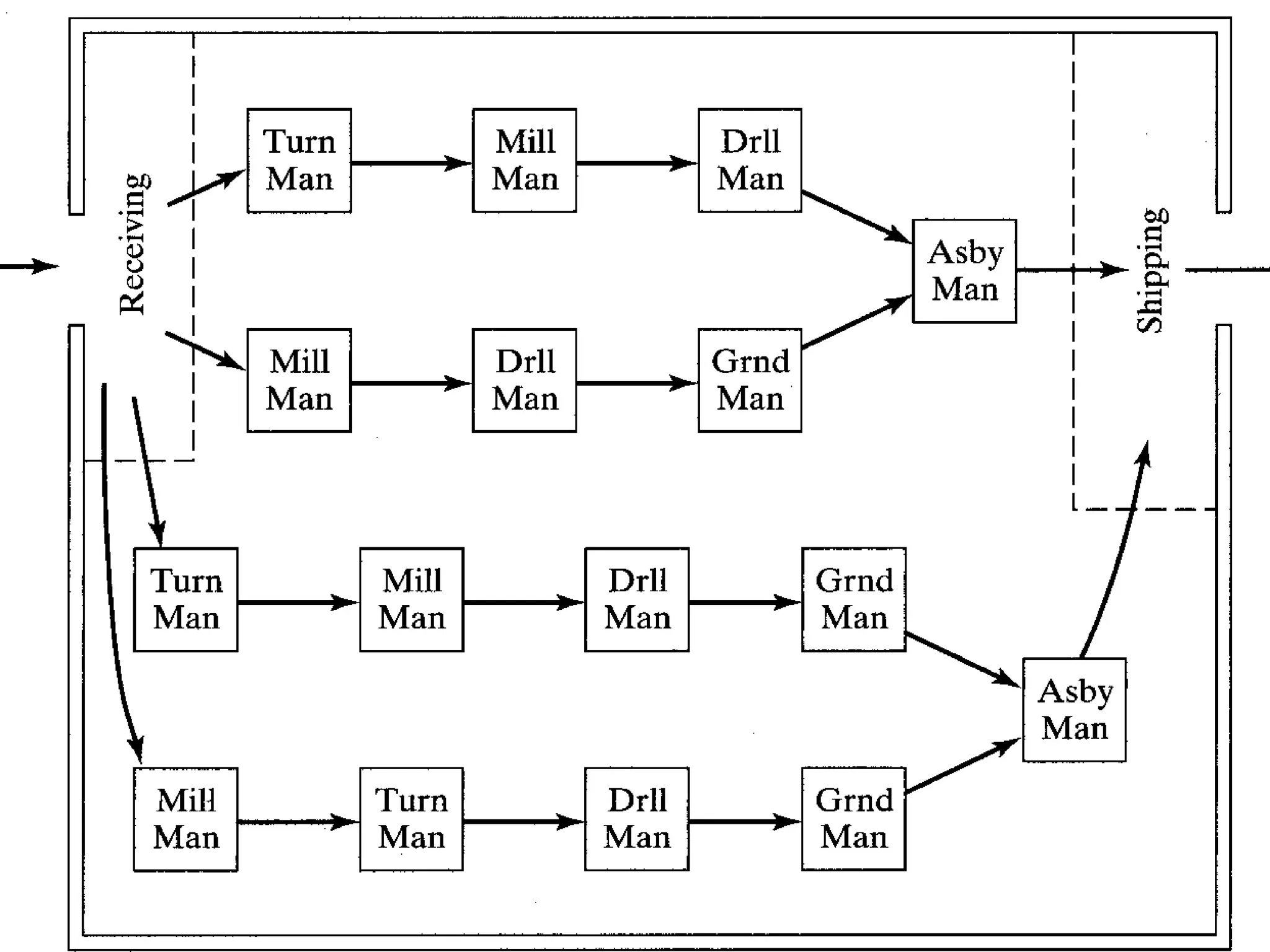Group technology (GT) is a manufacturing philosophy that groups similar parts into families to take advantage of their design and production similarities. Implementing GT involves identifying part families and rearranging production machines into cells specialized for each family. This reduces material handling, simplifies processes, and lowers manufacturing lead times. Key tasks are identifying part families using visual inspection, coding systems, or production flow analysis of process plans.



















